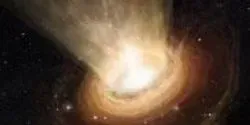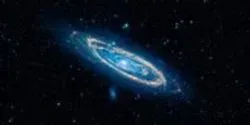space research

For centuries, humans have sought to learn whether life exists beyond Earth. That answer is closer than ever to fulfillment, and an Arizona State University team is working on a key part of that quest with NASA’s backing.

The “information loss paradox” in black holes — a problem that has plagued physics for nearly 40 years — may not exist.

Astronomers using observations from NASA's Hubble Space Telescope and Chandra X-ray Observatory have found that dark matter does not slow down when colliding with each other. This means that it interacts with itself even less than previously thought. Researchers say this finding narrows down the options for what this mysterious substance might be.

When NASA's Magnetospheric Multiscale (MMS) mission launched from Cape Canaveral Air Force Station, Florida, on Thursday, March 12, it delivered a four-spacecraft experiment into Earth orbit that will study an important phenomenon called magnetic reconnection. Aboard each of those spacecraft is an Energetic Ion Spectrometer (EIS) instrument, designed and built by the Johns Hopkins University Applied Physics Laboratory (APL) in Laurel, Maryland.















